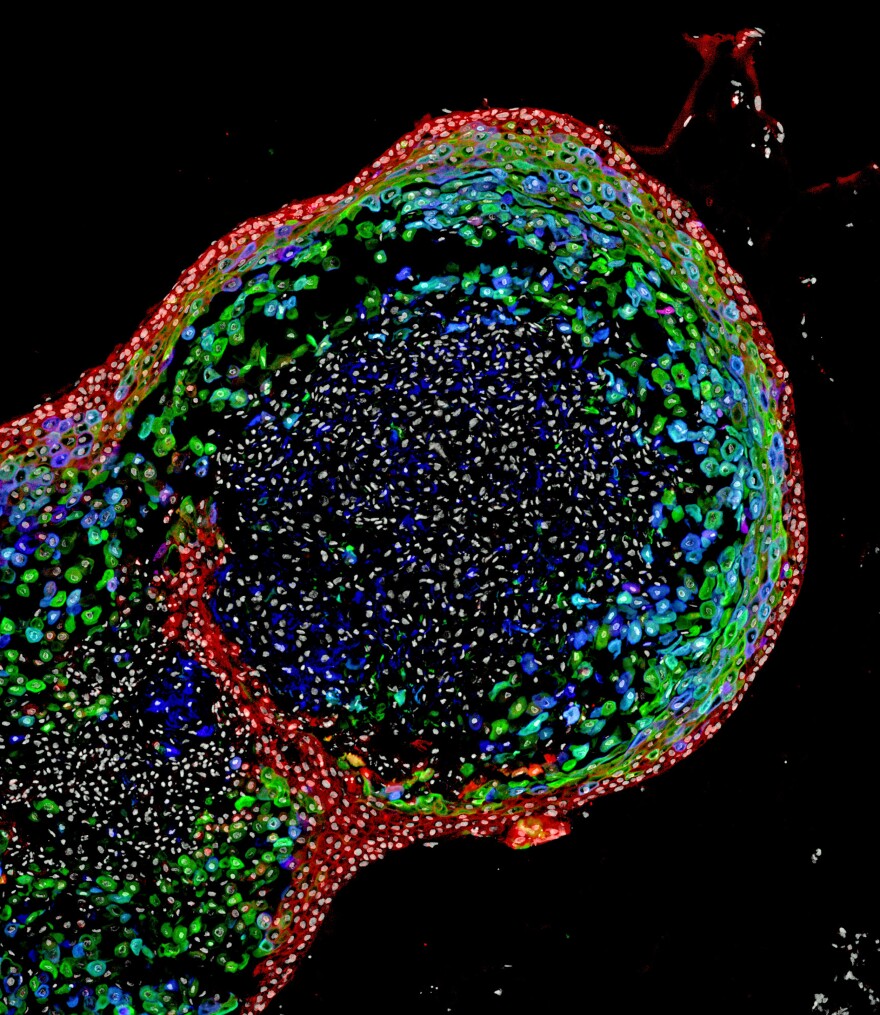Cincinnati Children's Hospital Medical Center scientists, in the process of creating a human gastrointestinal system in a lab, have grown an esophagus.
They say this is the first time they've been able to make human esophageal tissue entirely from pluripotent stem cells, which can come from any tissue type in the body. It's not yet ready for transplant but can be used to study disease and treatment.
Chief Scientific Officer at Cincinnati Children's Center for Stem Cell and Organoid Medicine (CuSTOM) Jim Wells, Ph.D., published the results of this latest advancement Thursday in the journal, Cell Stem Cell.
"Disorders of the esophagus and trachea are prevalent enough in people that organoid models of human esophagus could be greatly beneficial," Wells says. "In addition to being a new model to study birth defects, the organoids can be used to study diseases or bioengineer genetically matched esophageal tissue for individual patients."
An organoid is a tiny snippet of a 3D organ. It's as big as a thumb but with nerves, muscles, blood vessels and immune cells. WVXU reported this summer that Children's had created minature livers and pancreases.
How is Children's doing it? This video explains.
Wells says the ultimate goal is making organs for transplant because right now, only a quarter of the people who need them get them. What he and his staff have created now is esophageal tissue. A complete transplantable organ is still five to 10 years away.



